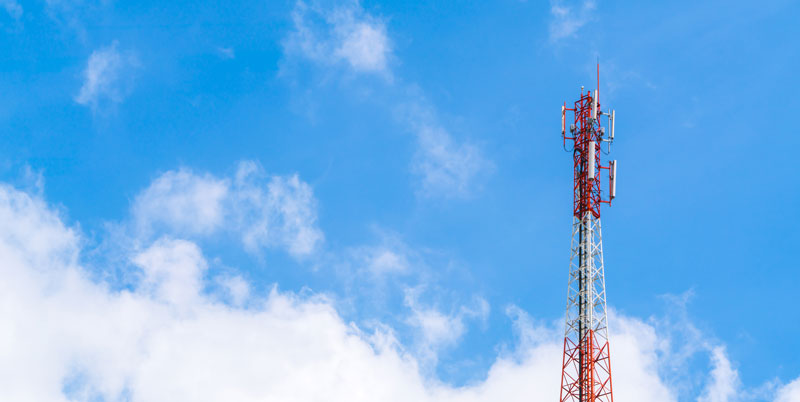What is LTE Advanced / 4G+?

In the fall of 2013, the frequencies for the then new mobile communications hope LTE were auctioned off in Austria. In an auction that is still viewed critically by many today, A1, T-Mobile and Drei snatched up the frequencies that are important for LTE. A few months later, the expansion and conversion of cell phone towers for the new technology began. In the meantime, [...]
In the meantime, many masts have been converted and made ready for LTE Advanced, or 4G+. LTE Advanced brings many advantages for customers and mobile network operators.
In the following article, we will show you what LTE Advanced actually is and how you can benefit from it.
Content
What is LTE Advanced?
 In recent years, all three Austrian mobile providers have made LTE Advanced available in many parts of the country.
In recent years, all three Austrian mobile providers have made LTE Advanced available in many parts of the country.
LTE Advanced is a further development of LTE that offers significantly higher transmission rates.
While "normal LTE" achieves around 100 MBit/s download speeds, LTE Advanced ideally in theory ten times this - i.e. 1000 Mbit/s - can be achieved.
From the CAT 6 development level onwards, this is referred to as LTE Advanced.
The most important technical development here is the so-called "carrier aggregation".
Carrier aggregation means that mobile network operators can combine several different frequencies in order to transmit data to and from customers.
Thus, it is no longer necessary to use only one frequency, but several different frequency ranges that are not directly adjacent to each other can be grouped simultaneously.
So with 4G+, mobile operators can get much more out of their existing frequencies and boost data speeds enormously by combining different frequency ranges.
This was not possible with the "conventional" LTE of the first expansion stages.
Which providers have LTE Advanced in Austria?
All three mobile communications providers with their own networks are gradually converting cell towers in Austria to the new technology.

In most cases, this has already been completed.
If you want to check for yourself whether LTE Advanced is available at your own location, you need an LTE device from CAT 6.
Android devices usually display 4G+ or LTE+ in the upper status bar when using LTE Advanced. Unfortunately, you cannot recognize 4G+ on the iPhone, except perhaps by the increased data transfer rate.
Mobile WLAN routers with CAT 6 or higher usually display 4G+ in the web interface when advanced technology is available.
What advantages has LTE Advanced?
LTE Advanced offers decisive advantages for both sides - customer and mobile provider.
Although customers will not be able to surf at 1000 Mbit/s immediately thanks to this technology, higher data transfer rates are generally possible everywhere if the tariff allows a faster speed and if reception is sufficiently good.
An increase of 10-20 Mbit/s can be quite realistic. In the best case, of course, even more.
But it is not just the speed that is improved - by increasing the efficiency of the LTE network, signal delays are also reduced, resulting in a lower ping results. A low ping is especially important for online video telephony or online gaming.
The performance of conventional LTE networks has also always been heavily dependent on capacity utilization. This meant that speeds were significantly slower in the evening as many people were online at the same time.
LTE Advanced does not completely solve this problem, but capacity is increased by frequency bundling, which makes the network more stable even at peak times.
How can I Use LTE Advanced?
To benefit from LTE Advanced, you need a suitable device with LTE CAT 6 or higher.
Devices from this LTE version onwards support Advanced.
Many modern smartphones already support this wireless technology. Newer mobile WiFi routers also benefit from LTE Advanced.
Before buying a new device, it is worth looking at the packaging or searching for tests and product descriptions on the Internet to find out which LTE category the device supports.
The view into the Future
The LTE Advanced expansion has already been completed in large parts of Austria and with the right device you can already use the faster network.
The next major development stage will be 5G.
Although it will still be some time before 5G is as available in Austria as 4G or 3G, this mobile technology will represent a significant technical leap that is greater than that of 4G.
When fully developed, 5G will theoretically enable up to 10 Gbit per second. At this speed, an entire movie can be downloaded in just a few seconds.
Thanks to the extremely low delay, 5G will also revolutionize the Internet of Things: Self-driving cars are to be connected to the internet via 5G.
5G is already available in some municipalities in Austria, for example in Hohenau an der March or Villachavailable. These are test projects in which selected users receive a 5G router.
Conclusion
LTE Advanced represents a Further development of conventional LTE and makes it possible to use the frequencies of mobile network providers much more efficiently.
In the end, both benefit: the customer and the mobile network provider - the former gets a faster Internet connection, the latter can offer a much more stable network with the frequencies already acquired, which is especially important at peak times (e.g., in the evening).
Especially in rural areas, LTE Advanced enables a significantly faster connection and is therefore also suitable as an alternative to cable internet.
However, it should never be forgotten that LTE is a "shared medium" - this also applies to Advanced (despite significant improvements): The more users are online at the same time via a mast, the more the speed of your own connection suffers.
